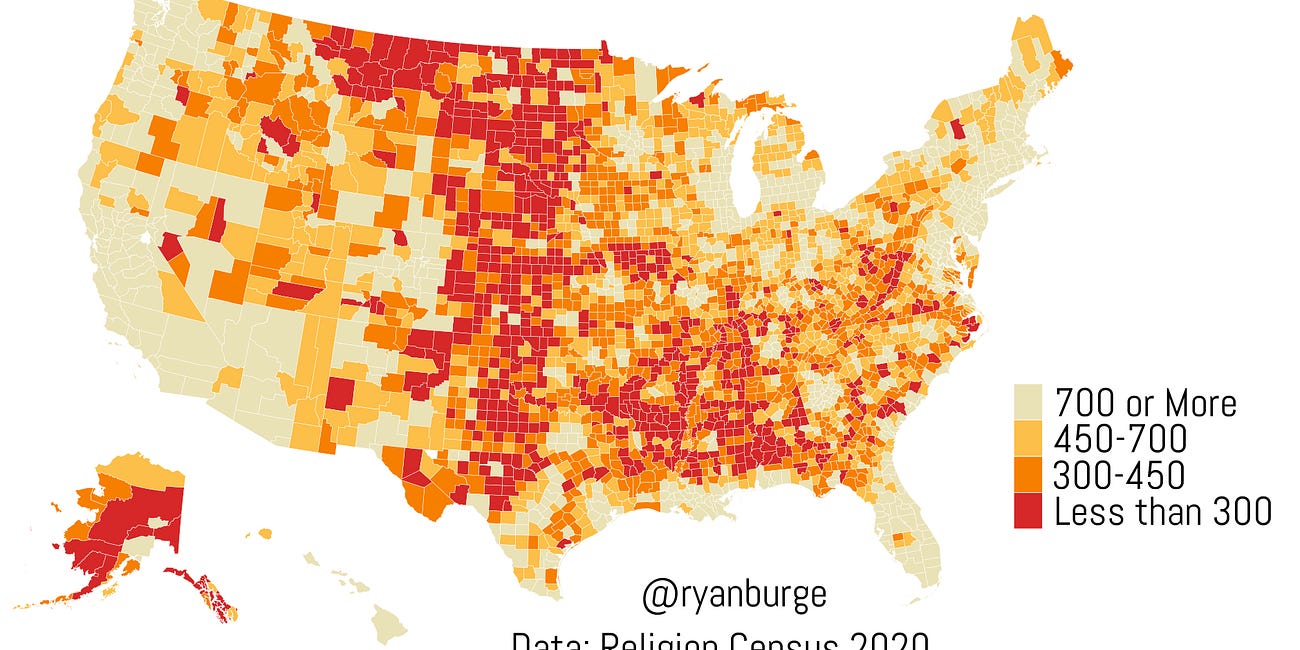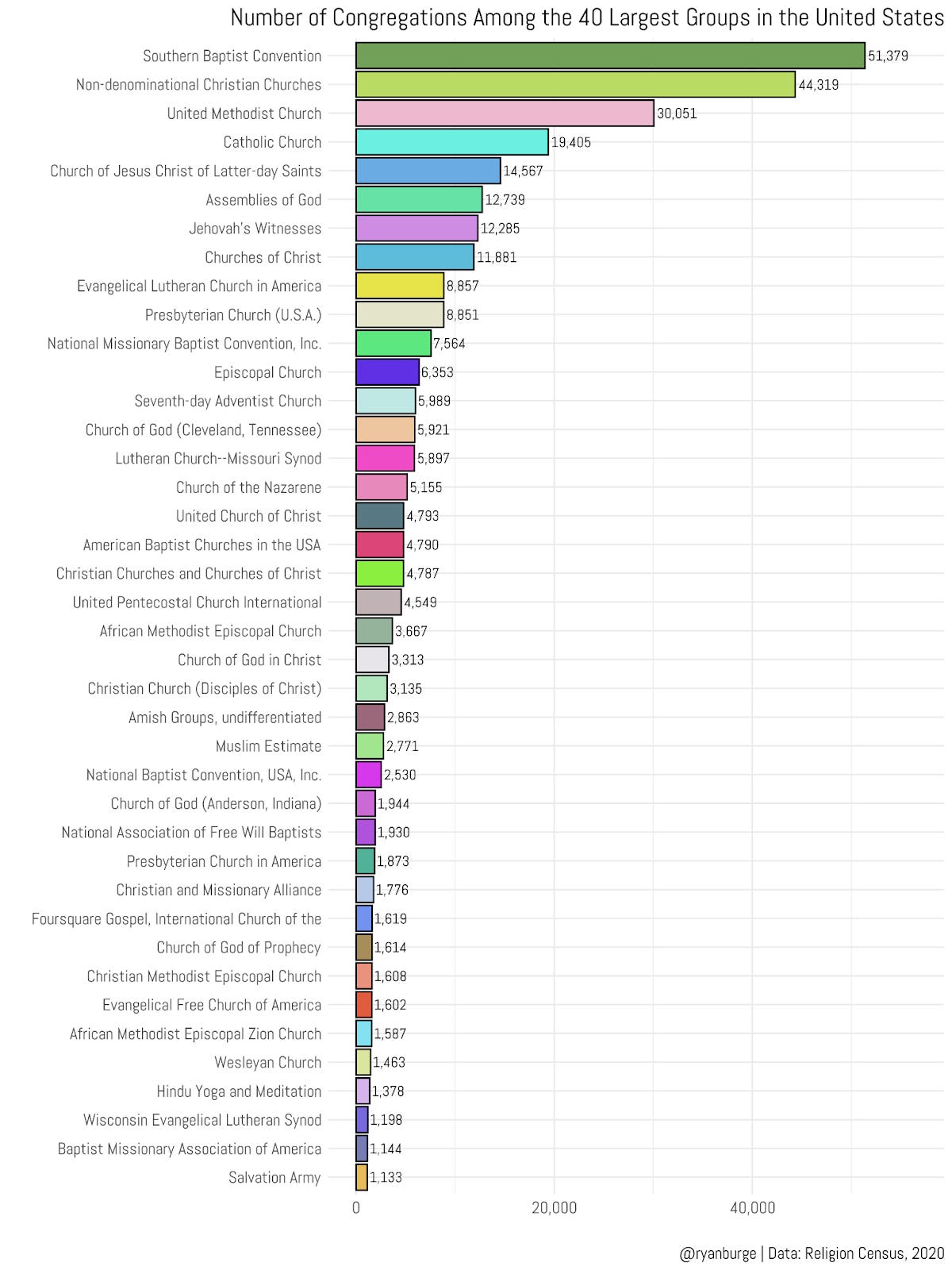How Many Members Should a Church Have? Lessons from the Religion Census
How Big Is the “Typical” Church in America?
Way back in the early days of this newsletter, I wasn’t very good at titling my posts. I know it seems like something an academic shouldn’t think about, but it really does matter. Here’s an example. On June 5, 2023, I published a bit of analysis titled “How Many Religious Congregations Are in Your County?”—descriptive, but not very punchy. I know the title isn’t great because I keep thinking about that post and want to pull it back up, but I can’t remember what it was called.
Here’s what I really should have called it: “What Parts of the Country Have Too Many Churches? And Which Ones Don’t Have Enough?” That’s the whole point of that data exercise. For instance, I found that in Arkansas there’s a church for every 407 people, but in Nevada it’s 2,042 people per house of worship. Generally speaking, the ratios are low in the South and much higher on the West Coast. It would be nice to move some of those houses of worship across the country to even things out, but that’s easier said than done.
How Many Religious Congregations Are in Your County?
Are there too many houses of worship in the United States? Or not enough? The common sentiment I hear is that in many smaller towns (especially in the South), that there’s a church on every corner and that most of them are unnecessary.
I wanted to noodle around with that idea some more today. I’ve been thinking about a different kind of ratio—the number of adherents compared to the number of congregations. Or, more simply: how many people would be in the pews if every member showed up one weekend?
First Baptist Church of Mount Vernon, Illinois, had a total membership of about 30 folks when we decided to close in July 2024. Our average Sunday attendance hovered around 10–12 in the months leading up to our last service. When I attend Mass with my wife at St. Mary’s, I’m certain their congregation has a couple of thousand folks on the membership rolls.
Gathering this kind of information is really tough, for what it’s worth. It’s my strong belief that most religious groups don’t do a great job of data gathering. That problem is especially acute among the smallest religious traditions, which don’t have large organizational structures that lend themselves to accurate data collection and organization. To mitigate that, I’ll focus on the traditions in the 2020 Religion Census with the largest number of reported congregations. I settled on the 40 largest religious groups. Here’s what that looks like.
In the 2020 data, the Southern Baptist Convention reported about 51,000 churches, by far the highest of any group. The only other tradition that even comes close is non-denominational churches, at 44,319. I’m going to largely set them aside for the rest of this analysis. I know that the capable team at the Association of Statisticians of American Religious Bodies did a ton of work to identify as many non-denoms as they could, but it’s just impossible to try and find all of them. The only other denomination reporting at least 30,000 churches was the United Methodist Church. However, this data was collected before their schism, and their numbers are now significantly lower.
One result that may be striking is that Catholics don’t have nearly as many congregations as their membership would suggest. In fact, the Catholic Church has fewer than 20,000 houses of worship across the United States. The Southern Baptists have 2.5 times that number. It’s also interesting to note that the Church of Jesus Christ of Latter-day Saints is not far behind the Catholics, with 14,567 churches. It seems possible that in the coming decades the LDS could surpass Catholics in the number of congregations.
Of course, the 2020 data is just a snapshot in time. What I really wanted to figure out was which of these denominations were adding congregations and which ones had been shrinking. Fortunately, the Religion Census is collected every ten years, which allows us to track the growth or decline of houses of worship over time.




